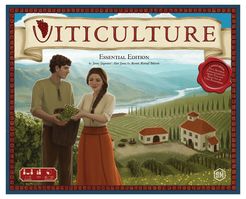A rabbi, a priest, and a game designer walk into a bar… (here’s the pitch)
A rabbi, a priest, and a game designer walk into a bar and the bartender makes his usual pitch. “What’ll you have?”
After ordering and finding a table, the conversation turns to their jobs and they start to complain about their lousy pay.
“It’s sometimes hard to cover all the bills. I only get paid monthly”, says the Rabbi.
“You’re lucky” says the priest. “I only get paid every other month.”
“You’re both lucky” says the game designer. “I only get paid quarterly.”
The Rabbi, trying to make her feel better, says to the game designer “well, at least the royalty cheques you get once every three months must be good.”
To which the game designer replies “No, I mean every time one my games sells I only make a quarter.”
Ba-dum-ching.
Creating your own pitch
Okay, that may have made you laugh, or maybe it made you groan. It doesn’t matter. What I’m trying to convey here is how important it is to get your message across clearly. (If you’re interested in seeing how game designers actually get paid though, check out this article I wrote HERE)
We game designers sometimes talk in terms that no one outside our industry would ever understand. We can even confuse most casual gamers in the way we describe things.
Tell me which one sounds more appealing to you:
“It’s a worker placement game with aspects of economics and hand management.”
or
“Players find themselves in the roles of people in rustic, pre-modern Tuscany who have inherited meager vineyards. They have a few plots of land, an old crushpad, a tiny cellar, and three workers. They each have a dream of being the first to call their winery a true success.”
The first one sounds like a board game sommelier. And not a very compelling one.
The second description talks a lot more regarding what the game is actually about and intrigues you to want to play.
Both are accurate descriptions of the game Viticulture by Jamey Stegmaier. Yet one is clearly more appealing. I actually pulled the latter from the Boardgamegeek description (good job, Jamey!).

Elements of a good pitch
Whether you’re pitching your game to a publisher or trying to find interesting playtesters, you need to be able to distill your game down into a short elevator pitch. And it has to be one that will get people interested in your game.
Rather than talk about the mechanics of your game, focus on the following:
- The roles that players take on
- The setting of your game
- What players do in your game or what’s available to them
- The objective of your game
- What makes your game unique
Let’s see how the second description of Viticulture accomplishes this:
- Players find themselves in the roles of people in rustic, pre-modern Tuscany who have inherited meager vineyards (covering both the roles and setting)
- They have a few plots of land, an old crushpad, a tiny cellar, and three workers (what’s available to them)
- They each have a dream of being the first to call their winery a true success (the objective and what makes this unique)
Do you see how describing your game in this way would appeal to more people?
Rather than sounding mechanical and clunky, you’re drawing people in by showing them the experience they will have. Will this make everyone want to play your game? Not necessarily. Everyone likes different kinds of games, so no matter how well you describe yours, it may not be someone’s cup of tea. But at least you’ll bring in a lot more of the gamers who are more likely to want to try, and perhaps even buy, your game.
An epidemic of pitches
Think about how you would pitch other games in your collection. For example, if I wanted to convince someone to try Pandemic, I’d say something like:
“As members of the CDC (Centers of Disease Control and Prevention), we’ve been tasked with stopping a global outbreak of four deadly diseases. As a team, we’ll need to travel around the world, gathering intelligence and stopping the spread of the diseases, by curing each one of them before time runs out. Each one of us will play a different role and have unique abilities we need to use in order to save the world.”
Makes you want to play, right? Definitely a lot more than if I had described this as a game about cube placement and action points.
So, if you want to get more people playing your game, stop talking mechanics and start talking about the experience players will have. You’ll be glad you did.

4 comments
Jeremy S
Will there be a recording of the Webinar available afterward? I have a prior commitment that I was unable to reschedule, so I likely can’t attend this evening.
Joe Slack
Yes, Jeremy! There definitely will be. I’ll share this with everyone who signed up but couldn’t make it. 🙂
DD O’Brien
Thanks for this article! I’ve been struggling to describe what makes one of my games unique through mechanisms and game-play BUT I now realize I need to emphasize the feeling and experience the players have.
Joe Slack
My pleasure, DD!